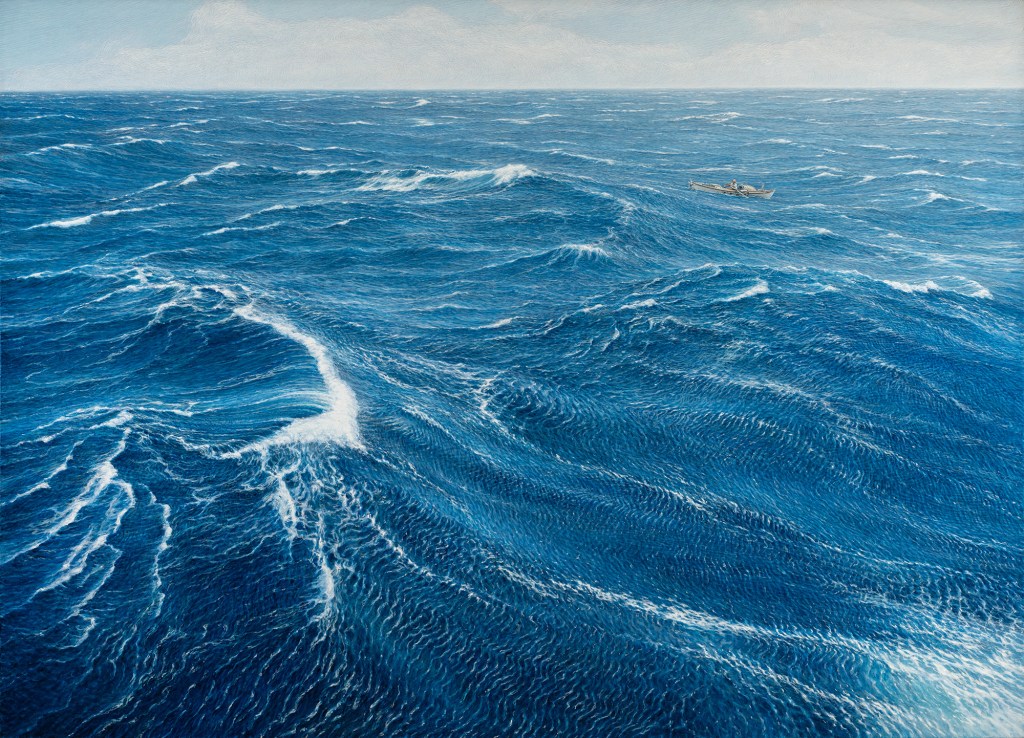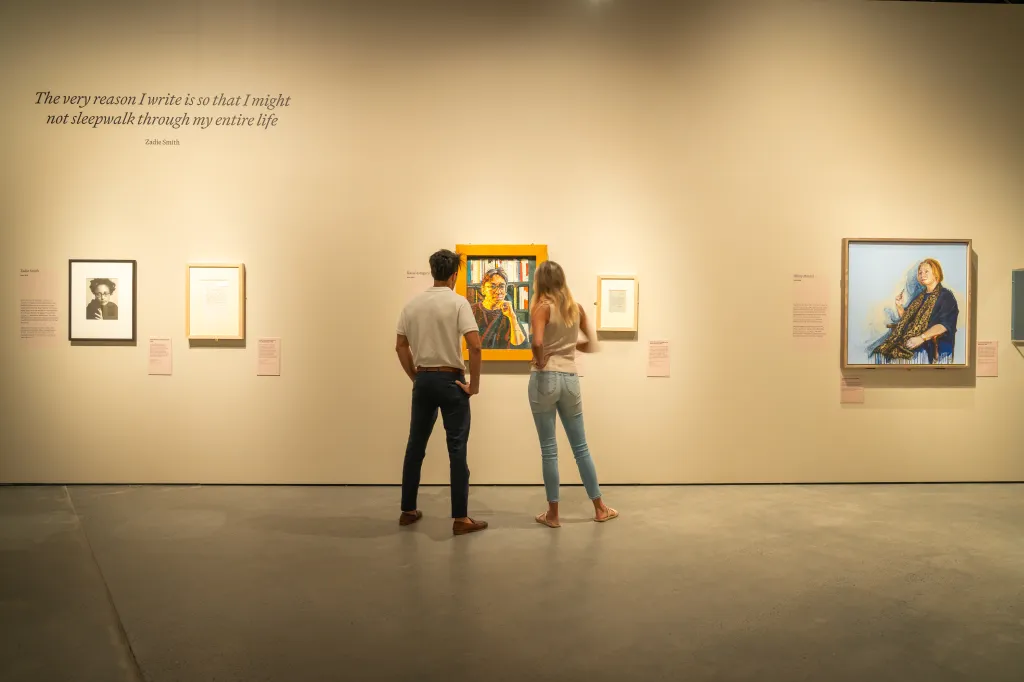Journey to the ends of the Earth …
Brisbane artist Peter Anderson is an adventurer in the mould of Mawson and Shackleton, so it’s fitting that his paintings chronicle his own incredible adventures.

The chance of visiting the Russian Arctic or the frozen wastes of the Antarctic are close to nil for most of us. Yet we can go there vicariously through the incredible art of Peter Anderson.
This Brisbane painter is an adventurer whose journeys to the ends of the Earth are chronicled in his remarkable and realistic paintings. Every few years he exhibits at Philip Bacon Galleries, with his latest show on now – and it’s nothing short of astounding. Breathtaking. Gobsmacking. I could go on.
I’m dazzled by his physical and artistic achievements. This bearded, tall, rangy, sailor, adventurer and artist looks like a polar explorer of the past. He is steeped in the history of places such as our polar regions and has been to places most of us will never go.
Photos of these regions could never achieve what he does with his paintings. In the current show he explores Fiordland in the very south of New Zealand and revisits the Russian Arctic, the Antarctic and places such as remote Macquarie Island.
Maybe he was Douglas Mawson (there’s a great painting of Mawson’s Hut in the exhibition) or Ernest Shackelton in a previous life? I wouldn’t be surprised.
Some of his adventures include his wife Kim, also a talented artist. They started as they meant to go on, I guess, sailing around the world together on their honeymoon.
You might like
There’s a painting in this show called Southeasterly at last, which chronicles a recent journey sailing from Tasmania to Brisbane. Kim joined her husband for that one, which was a doddle compared to other epic voyages.
Some of the works in this show feature those fiords at the tip of New Zealand. Kim joined Anderson on that journey too, following in the wake of James Cook’s 1773 trip to map the area. They travelled aboard an expedition ship belonging to Rodney Russ, founder of Heritage Expeditions. Anderson has been on many trips with Russ, often acting as a tour guide and zodiac driver as well as being a kind of artist-in-residence, as William Hodges was with Cook’s 1772-1775 voyage on the Resolution.
The painting “If you please, Mr. Hodges”, is a view glimpsed from a fiord.
“The title refers to the words I imagine Cook may have said to William Hodges once the Resolution was alongside at Astronomy Point,” Anderson explains. “Hodges painted the well-known painting View in Pickersgill Harbour, Dusky Sound. N.Z. from this viewpoint.”
Cook was in the area for five weeks, famously observing the transit of Venus while refitting his ship.
Steeped in the world of navigators and explorers, Anderson follows in their footsteps in places of solitude and extreme conditions. He witnesses nature in all its fury and beauty. No-one can paint the ocean like he can.
Subscribe for updates
A case in point is the remarkable painting Tom’s World, completed in 2023. It features the intrepid young Brisbane sailor Tom Robinson, who was rowing from Peru to Brisbane in his timber boat, Maiwar. He was eventually shipwrecked near Vanuatu – and rescued – ending a valiant effort. Anderson pictures him alone in a vast expanse of mid-ocean with the wind driving sea spray against his lone figure.
Other works feature penguins in icy locales and in Outpost, New Siberian Islands there is even a polar bear rummaging around a deserted settlement.
Anderson admits the Russian Arctic is probably now off his list.
Tooth and Claw, Macquarie Island depicts a remote Australian territory he has visited numerous times. This painting is a scene from Horsborough Bay on the northwest windward corner of the island.
“The various species of penguin on the island come and go from their rookeries ashore,” Anderson writes in his notes for the exhibition. “In doing so, they run the gauntlet of avoiding predators such as orcas and leopard seals. Here a leopard seal, using the kelp to hide in ambush, has a sneak look at the gentoo penguins at the start of this game.”
Hopefully, these notes will one day form the basis of a memoir of his travels. We have the journals of Cook and others, after all, so why not the journals of Anderson too? Mind you, they are well chronicled through his work, so maybe a major coffee table book featuring his paintings over the decades, with notes attached, will suffice.
In the meantime, we have this exhibition and it is a wonder to behold. And for a change of pace there is also an exhibition of the exquisite porcelains of Kirstin Coelho, whose mastery of the form is unrivalled.
Peter Anderson and Kirstin Coelho exhibitions continue at Philip Bacon Galleries, Fortitude Valley, until December 14.
philipbacongalleries.com.au

